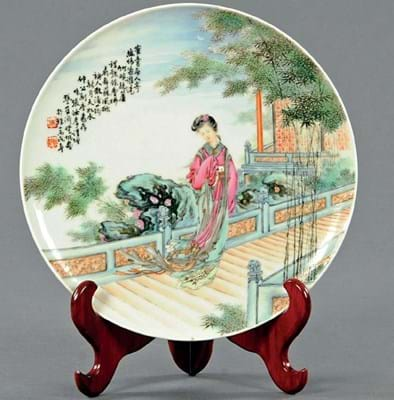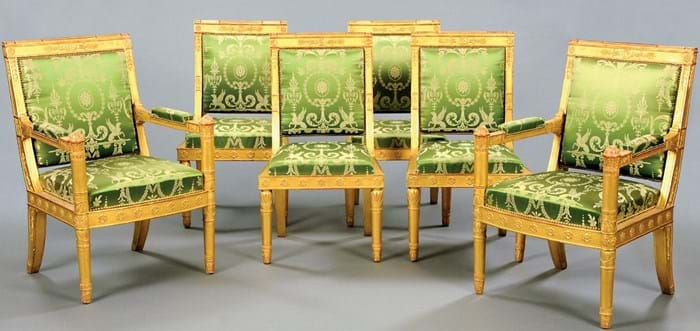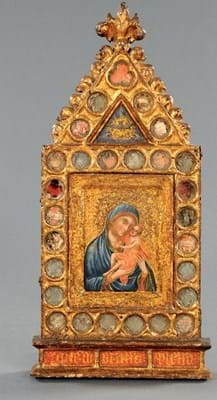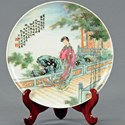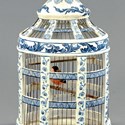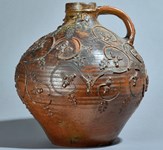Small British towns periodically become international trading centres when it comes to art and antiques.
This was ably illustrated in the Cumbrian market town of Cockermouth in late November when auctioneers Mitchells (20% buyer’s premium) dispersed 2000 lots across a three-day sale. Sought-after material – and the buyers – emerged from across the northern hemisphere.
The star lot was from China: a porcelain plate dated 1947 providing further evidence of the demand for the best artist-decorated Republican material.
Entered into the November 28-30 sale by a local Barrow vendor, the 8½in (22cm) diameter plate depicting a young woman on a balcony was inscribed with a poem and two red seal marks.
It was given what the auctioneers described as a ‘conservative’ estimate of £80-120 but expert opinion was that the inscription revealed the artist to be Wang Dafan (1888-1961), a member of the famous group of porcelain painters known as the Eight Friends of Zhushan. He was particularly known for his figure painting.
A sufficient number of bidders had found it and the plate sold to a Chinese agent acting for a collector with a bid of £17,500. Even with premium and VAT adding a further £4200, it was not considered by trade specialists to be over-priced.
Propaganda purpose
The sale also included a private collection of some 50 lots of Chinese and Vietnamese propaganda dating from the 1966-76 Chinese Cultural Revolution.
A particularly eye-catching item was a porcelain figurine of a man and woman astride a rocket representing industry and agriculture.
Painted to the banner Surpassing Great Britain and catching up United States and inscribed to the base Long live the main direction, the 14½in (37cm) high figure had minor condition problems but it more than doubled the top estimate at £460.
Estimates on European material more accurately reflected the tougher retail climate. Among the contents of a lakeside house at Windermere consigned to Mitchells was a French Empire giltwood and upholstered suite – a pair of fauteuils and four side chairs – each stamped P Marcion and TH for Pierre Benoit Marcion (1769- 1840), an ebeniste who supplied Napoleon’s furniture.
They came with a copy receipt dated May 2000 from dealer Mallett. This recorded that the suite, with a provenance to the Pailaise des Tuileries, had been sold ‘at a discounted purchase price’ of £74,765. At Cockermouth it was estimated at £15,000-25,000 and sold at the lower figure to a dealer in the room acting for a client.
A medieval north Italian icon depicting the Madonna and Child, in tempera on a gold ground panel in an integral 23in (59cm) gabled frame, had been bought from London dealer Richard Philip for £17,500 in 2002.
Catalogued as School of The Marches (c.1300-20), it was estimated at £5000-8000 and sold to an Italian buyer at £8500.
An 18th century, probably Dutch, tin-glazed earthenware birdcage was a real eye-catcher.
Around 22in (56cm) high and decorated to the double-dome top with three bands of stylised acanthus leaf above an armorial shield, it went a shade below estimate at £2300 – about a third of the price paid at Oxfordshire dealership Lucy Johnson in 1995.
Higher prices
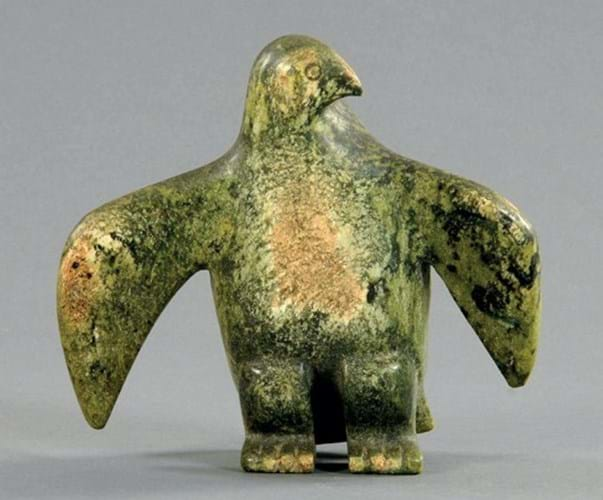
Inuit serpentine bird carving – £3200 at Mitchells.
On the upside, other areas of collecting have become considerably pricier these past couple of decades.
Completing the world tour at Cockermouth was a North American Arctic work – an Inuit carved serpentine model of a standing bird.
From the early to mid-20th century, the 8in (20cm) carving came to Mitchells in a box of items destined for a weekly household sale but its potential was spotted by auctioneer Richard Harrison and put into the fine art event.
A full catalogue description triggered international online bidding and, against a here-to-sell £50-100 estimate, it sold to a Canadian buyer at £3200.


